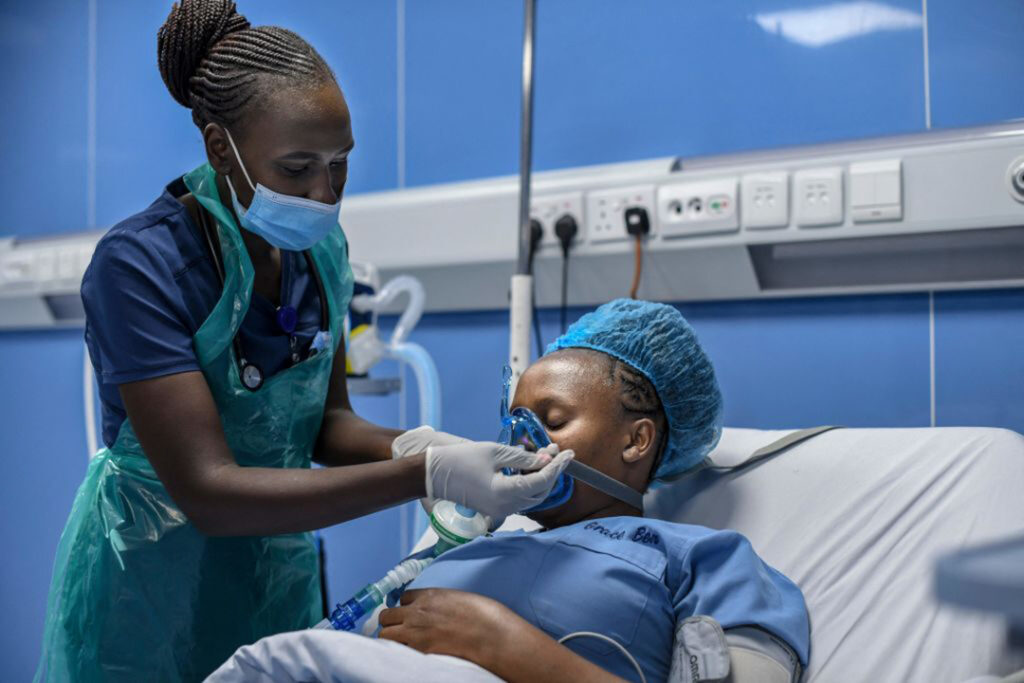ADF STAFF
More than a dozen African countries are moving toward a third wave of COVID-19 infections, according to the director of the Africa Centres for Disease Control and Prevention (Africa CDC).
Director John Nkengasong said at his June 10 press briefing that 14 countries were heading toward a third wave as the continent struggles to import and administer enough vaccines to protect its population and confronts the so-called Delta variant first discovered in India.
“That is unfortunate but expected in a pandemic,” Nkengasong said. “We see these waves coming on and on until we have a vaccine. That really shows the need to roll out vaccines at speed and at scale.”
In South Africa, the National Institute for Communicable Diseases reported that the country had crossed the threshold into a third wave with more than 9,100 cases in a single 24 hours. Four provinces — Free State, Gauteng, Northern Cape and North West — reported a rise in cases consistent with a third wave of infections. Hospitalizations also are rising.
Complicating matters, 13 African countries have reported cases of the B.1.617 variant, also known as the Delta variant.
“You clearly see that the variant that was identified in India is getting a hold on the continent,” Nkengasong said.
However, it’s not clear how much the Delta variant is affecting the third wave, he added. Variants discovered in South Africa and the United Kingdom heavily influenced the second wave of infections.
As of mid-June, the Africa CDC reported more than 5 million cases of COVID-19 and more than 135,000 deaths since the pandemic began in early 2020.
“Many African hospitals and clinics are still far from ready for a surge in critically ill COVID-19 patients,” Dr. Matshidiso Moeti, World Health Organization (WHO) regional director for Africa, told reporters during a recent news conference.
Moeti urged African nations to prepare for another surge of infections. She said the WHO is available to help countries by quickly deploying experts and vital equipment, such as oxygen concentrators, where they are needed.
Most African countries have less than one intensive care unit bed for every 100,000 people, Moeti said. A low ratio of ICU beds is associated with increased deaths from COVID-19, according to a report published in April in the Journal of Surgical Research.
South Africa remains the continent’s worst-hit country, with more than 1.7 million cases and more than 58,000 deaths since the pandemic began. Along with South Africa, countries seeing some of the sharpest increases in COVID-19 cases include Guinea-Bissau, Namibia, Nigeria, Sierra Leone and Uganda.
“We’ve seen how COVID-19 can quickly overwhelm health systems that are not equipped to manage a surge in cases,” Moeti said. “So critical care capacities remain vitally important.”
Meanwhile, African countries vary widely in their ability to administer COVID-19 vaccines to protect vulnerable residents. The continent has received nearly 55 million vaccine doses and administered 65% of them. Egypt, Ethiopia, Morocco and South Africa lead the continent in vaccination rates, yet so far just 0.6% of the continent’s population is fully vaccinated.
At the other end of the spectrum, Burundi, Eritrea and Tanzania have the continent’s lowest vaccination rates. Togo received its first round of vaccines June 1 from COVAX, the worldwide initiative to provide equitable access to vaccines. Chad began vaccinating its vulnerable population June 4, Nkengasong said.
Nkengasong praised Rwanda as a model for the speed with which health officials get shots into arms.
With imports from the Serum Institute of India on hold likely until the end of this year, Africa’s vaccination plan has been thrown into disarray. Millions of people have received the first shot of the AstraZeneca vaccine made by the Serum Institute and supplied by COVAX but have no idea when they’ll get the follow-up shot to be fully vaccinated.
Nkengasong urged nations to continue testing for COVID-19 and its variants. He asked people who are unvaccinated to continue to wear masks, wash hands regularly and practice social distancing to reduce the impact of the third wave.
“We’re not helpless,” he said. “We have some tools in our hands. The plan is to work with the community to make sure these tools are properly implemented.”

